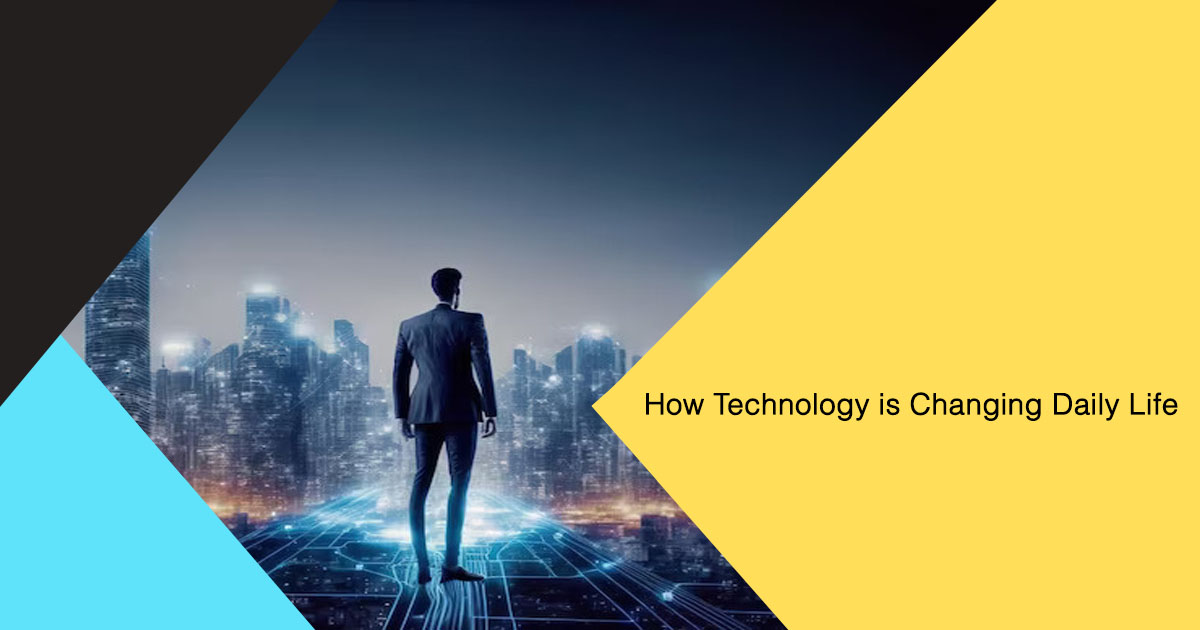How Technology is Changing Daily Life in the U.S.

Technology is fundamentally reshaping daily life in the U.S., affecting how people communicate, work, shop, and even monitor their health. With rapid advancements in artificial intelligence, connectivity, and digital services, American lifestyles are becoming more streamlined, personalized, and interconnected. Here’s a look at the main ways technology is influencing daily life across the U.S.
1. Instant Communication and Social Connectivity
- Overview: Mobile technology and social media have transformed how people communicate and maintain relationships. Platforms like Facebook, Twitter, Instagram, and newer apps like TikTok enable instant sharing and communication with friends, family, and even the world.
- Impact: Communication is now nearly instant and constant, and people can stay connected with others no matter their location. However, there are downsides, such as the impact on mental health due to social media comparison and overuse.
- Future Outlook: Social media and messaging apps will continue evolving, potentially incorporating more immersive experiences like augmented reality (AR) and virtual reality (VR) for social interactions.
2. Online Shopping and E-commerce Convenience
- Overview: E-commerce has become a dominant way to shop, with platforms like Amazon, Walmart, and countless specialty retailers offering nearly anything online, often with rapid delivery.
- Impact: Americans enjoy the convenience of shopping from home, with options for fast, sometimes same-day, delivery. The availability of reviews, recommendations, and personalized shopping experiences has made e-commerce an integral part of consumer behavior.
- Future Outlook: The integration of artificial intelligence (AI) for personalized recommendations and the rise of smart shopping assistants are set to make online shopping even more customized and efficient.
3. Smart Homes and Connected Devices
- Overview: Smart home technology, from Amazon Alexa and Google Home to smart thermostats, lighting, and security systems, is enhancing comfort and convenience at home.
- Impact: With IoT (Internet of Things) devices, people can control home appliances, monitor security, and manage energy usage from their smartphones. These systems make daily tasks easier, improve security, and can even help reduce energy bills.
- Future Outlook: As more devices become IoT-enabled, smart homes will become increasingly sophisticated, eventually allowing for greater automation of home management and energy efficiency.
4. Remote Work and Digital Collaboration
- Overview: Advances in remote work technology, spurred by the pandemic, have reshaped the work landscape in the U.S. Tools like Zoom, Slack, Microsoft Teams, and cloud storage allow people to work from anywhere.
- Impact: Remote work offers flexibility, reduced commuting time, and the possibility of a better work-life balance. However, it also presents challenges, such as isolation and the blurring of work-life boundaries.
- Future Outlook: Hybrid work models are likely to persist, with further advancements in digital collaboration tools, VR meeting spaces, and even AI-powered virtual assistants to enhance productivity.
5. Streaming Entertainment and On-Demand Media
- Overview: Streaming services like Netflix, Hulu, Disney+, and YouTube have revolutionized how people consume entertainment. Viewers can watch movies, shows, and videos on demand, anytime and anywhere.
- Impact: People no longer rely on cable schedules, and the choice of content has dramatically increased. Streaming has led to more personalized viewing options and greater access to a wide variety of content.
- Future Outlook: Streaming services will likely continue to expand, with more personalized content recommendations, exclusive releases, and interactive content experiences.
6. Healthcare at Home with Telemedicine
- Overview: Telemedicine enables people to consult healthcare providers online, making it easier to get medical advice, diagnoses, and prescriptions without visiting a doctor’s office.
- Impact: Telemedicine has improved access to healthcare, especially in rural or underserved areas. Patients appreciate the convenience, and it helps reduce in-person appointments for non-critical health concerns.
- Future Outlook: As telehealth platforms grow, we’ll likely see the integration of wearable health devices and AI-driven diagnostics, allowing for more detailed monitoring of patients from home.
7. Health and Fitness Apps and Wearables
- Overview: Wearable devices like Fitbit, Apple Watch, and various health apps allow users to track activity levels, sleep patterns, heart rate, and even stress levels.
- Impact: People are becoming more health-conscious, using these tools to set fitness goals, monitor vital signs, and maintain healthier lifestyles. They also help healthcare providers track patient data over time.
- Future Outlook: Wearables are expected to become more advanced, providing even more accurate data, and possibly detecting early signs of medical conditions, thereby empowering proactive healthcare.
8. Education and E-Learning Opportunities
- Overview: E-learning platforms and online courses have made education more accessible. Websites like Coursera, Khan Academy, and YouTube offer free or affordable courses on virtually any topic.
- Impact: Education has become more democratized, with students and professionals alike having the flexibility to learn new skills from anywhere. Online resources have also enhanced traditional learning with supplemental materials.
- Future Outlook: Blended learning models combining online and in-person education will likely grow, with more interactive and personalized e-learning experiences driven by AI and VR technologies.
9. Transportation Innovations: Electric and Autonomous Vehicles
- Overview: Electric vehicles (EVs) and autonomous driving technologies are reshaping the transportation industry. Tesla, Rivian, and other companies are leading in EV manufacturing, while companies like Waymo work on autonomous driving.
- Impact: EVs help reduce emissions, and autonomous vehicles promise to make transportation safer and more efficient. Public charging stations are becoming more common, encouraging adoption.
- Future Outlook: As infrastructure improves and technology advances, EVs and autonomous cars will become more prevalent. Smart transportation systems may also improve traffic flow and reduce congestion.
10. Digital Payments and Cashless Transactions
- Overview: Digital payment methods, including mobile wallets like Apple Pay, Google Pay, and Venmo, are becoming standard for many Americans, making transactions faster and more convenient.
- Impact: People now pay for goods and services without cash or credit cards. Digital payments are transforming commerce, enhancing security, and supporting contactless transactions.
- Future Outlook: Digital payments will likely expand, with more focus on secure, biometric-based authentication methods. Cryptocurrencies and blockchain technology may also become more mainstream.
Conclusion
Technology is embedded in nearly every aspect of daily life in the U.S., enhancing convenience, connectivity, and access to services in ways that would have been unimaginable just a decade ago. As these technologies advance, they will continue to shape how people live, work, and interact, creating both new opportunities and challenges in an increasingly digital world. Staying informed and adapting to these changes is key to thriving in this ever-evolving landscape.










